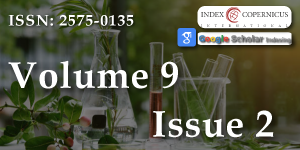Energy Features Amino Acids in Irrigated Soils
Main Article Content
Abstract
The paper studies the potential energy in virgin and irrigated light gray soils in the north of Fergana through the energy of some amino acids. Each amino acid separately contains a certain share of energy, which distinguishes them from each other and affects the properties of the soil in different ways.
Article Details
Copyright (c) 2025 Khaidarov MM, et al.

This work is licensed under a Creative Commons Attribution 4.0 International License.
Yuldashev G, Khaydarov M. Amino acid pool of serozem in the north of Fergana. Namangan State Univ J. 2019;(8):86–92. Available from: https://namdu.researchcommons.org/cgi/viewcontent.cgi?article=1664&context=journal
Yuldashev G, Khaydarov M. Energy potential of humus in gray soils. Namangan State Univ J. 2019;(11):62–67. Available from: https://namdu.researchcommons.org/cgi/viewcontent.cgi?article=1855&context=journal
Turdaliev A, Yuldashev G, Askarov K, Abakumov E. Chemical and biogeochemical features of desert soils of the Central Fergana. Agriculture (Pol'nohospodárstvo). 2021;67(1):16–28. Available from: https://sciendo.com/article/10.2478/agri-2021-0002
Turdaliev AT, Askarov KA. Energy characteristics of trace elements in saline soils of Central Fergana. Actual Probl Mod Sci. 2019;(6):83–87.
Turdaliev AT, Askarov KA, Mirzaev FA. Morphological features of irrigated soils in Central Fergana. Soils Environ. 2019;2(3):56–61. Available from: http://dx.doi.org/10.31251/pos.v2i3.71
Eshpulatov ShYa. Some historical features of the development of the Margilan oasis. Sociosphere. 2013;(2):58–60.
Eshpulatov Sh, Teshaboev N, Mamadaliev M. Introduction, properties and cultivation of the medicinal plant stevia in the conditions of the Ferghana Valley. Eurasian Union Sci. 2021;2(2):37–41. Available from: http://dx.doi.org/10.31618/ESU.2413-9335.2021.2.83.1253

